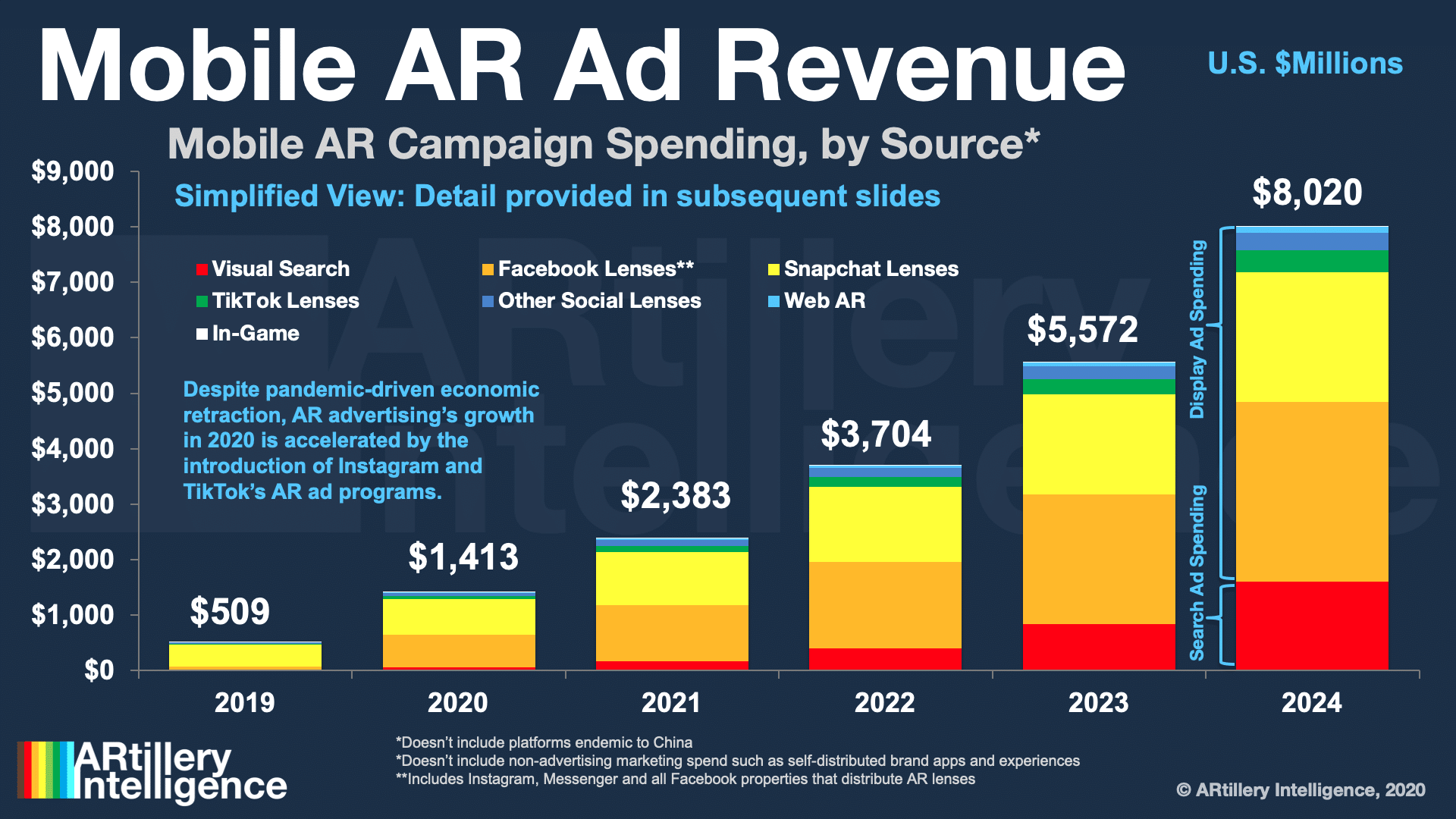
Snapchat continues to be a model in the nascent consumer AR sector. That’s not only because it’s a revenue leader with unproven and under-monetized technology, but because of Wall Street results. Few companies can say this outside of PTC, Microsoft and NexTech.*
We first saw this when Snap attributed AR lens ad revenue to its famous 2019 stock-market rebound, driving it to double-down and triple-down on AR. It made a similar AR proclamation after its recent blowout Q3 that saw $679 million in revenue — a 52 percent year-over-year jump.
As we examined recently, this Wall Street impact is a key component in Snap’s feedback loop that drives further innovation and investment in AR. It’s seeing financial results and doubling down. The question is if this cycle will continue bestowing “political capital” on AR within Snap in 2021.
“The adoption of augmented reality is happening faster than we had previously anticipated,” said Snap CEO Evan Spiegel during its Q3 earnings announcement, speaking to ongoing growth in lens use. “We are working together as a team to execute on the many opportunities in front of us,”
Price Target
Addressing the question about AR’s propulsion of (and from) Snap’s Wall Street performance, analyst guidance signals positive connections. SNAP is currently trading near its all-time high at $44, which tracks to Deutsche Bank’s raised price target of $40 to $48 set earlier this month.
More importantly, this price target was guided by a research note that tied Snap’s advertising growth directly to AR. The note further specified that AR will account for a growing piece of global digital advertising spend, which it projects to grow 20 percent year-over-year in 2021.
This will be partly driven by Covid-fueled ad budget reallocation (more on that in a bit), as well as things that Snap has in development. Deutsche Bank called out the virtual stores that Snap unveiled at its June partner summit, which have particular relevance for Covid-era shopping.
“We think sponsored lens/filter ads are better positioned to scale at Snap than most investors realize and set to tie in more explicitly with the company’s heretofore somewhat vague e-commerce strategy,” the DT research note read. “We think the company is on the cusp of rolling out more AR shopping experiences, including virtual stores.”

Historically Validated
All of the above factors also inform the market sizing of our research arm ARtillery Intelligence. It projects AR to grow from $1.4 billion this year to more than $8 billion by 2024 (see above). This measures money spent on paid ad campaigns rather than self-distributed AR, like brand apps.
Snapchat is the market share leader for that ad spend — currently and throughout the five year forecast period. However, this goes for single-app performance. Facebook is projected to take the lead if adding up all of its properties, including newer AR-entrant Instagram.
Panning back, the elephant in the room is a global pandemic. This is concerning, given that recessions tend to hammer ad spending. This will slow AR advertising’s momentum and lower previous projections, but the pandemic-advantaged sector will see net positive growth in 2020.
One historically-validated dynamic is that emerging digital media can benefit in recessionary periods when ad budgets shift from less cost-efficient or performant media. There’s evidence — including Snap’s Q3 earnings and DT’s bullish outlook — that this could play out for AR in 2021.
*Editor’s note: The author of this post previously sat on the advisory board of NextTech AR solutions and was granted stock options. He currently owns shares in the company. See AR Insider’s disclosure and ethics policy here.






